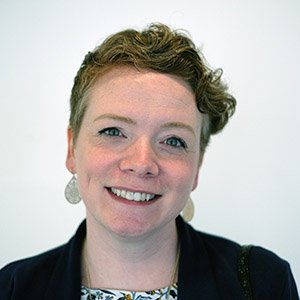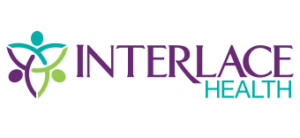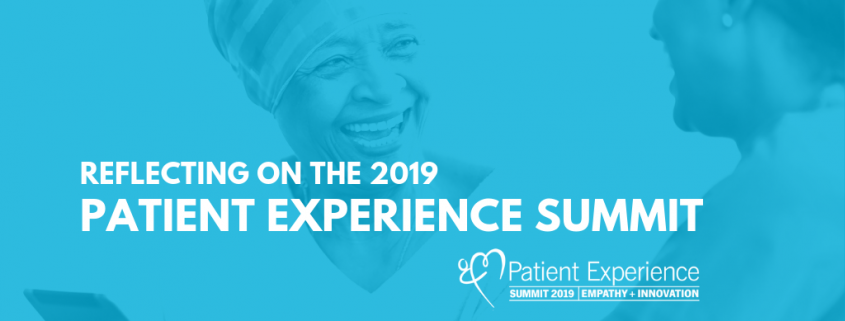Reflecting on the Patient Experience Summit 2019
Last month, I had the opportunity to attend the Patient Experience Summit 2019. A collaboration between HIMSS and Cleveland Clinic, it allows patients, practitioners, and members of the Health IT community to come together to share best practices, ideas, and inspiration about how we can improve the patient experience.
In several sessions, there was a focus on delivering a great patient experience at registration. As a former Administrative Operations Manager for several outpatient radiology facilities, this is a topic near and dear to my heart.
Our front desk associates are often the first face our patients see when they walk into our facilities. We all know that interaction with a facility’s front-line staff can set the tone for a patient’s entire visit. Did you know it can even affect a patient’s perception of their clinicians and the quality of their care?
Here are a few takeaways from sessions that highlighted the importance of delivering a quality patient experience at registration.
CREATING A “SUPER WOW!! EXPERIENCE” IN REGISTRATION
In their session, “Hidden Opportunities to Design a Better Experience,” Chaise Camp, Executive Director of Patient Experience and Jeremy Carr, Lead Patient Experience Advisor, both at Nebraska Medicine, outlined their approach to create a “Super Wow!! Experience” at registration.
They understood that the first step in enhancing the patient experience was enhancing the staff experience. The registration staff was focused on data entry instead of the patient. The result = an unengaged patient.
 Patients who had this impersonal experience reported feeling as though they were “just a number.” This experience went on to color their impression of their visit with their doctor.
Patients who had this impersonal experience reported feeling as though they were “just a number.” This experience went on to color their impression of their visit with their doctor.
Nebraska Medicine used many tactics to fight this situation. They started with an “Enjoy Your Day” training for medical receptionists. They also challenged the nurses and medical assistants to walk up to patients when calling them back from the waiting room with personal greetings.
This turned the patient experience from “I’m just the next person in line” to “my care team knows me and is expecting me!” Nebraska Medicine saw a significant improvement in survey results around the “Friendliness and Courtesy” of the nurses and assistants by using this personal patient greeting approach. They also saw improvements in their Likelihood to Recommend survey results.
LONG WAIT TIMES IN CLINIC, MAKE IT LOOK POORLY RUN
In another session, “Designing the Medical Practice Experience to Earn Loyalty and Engage Digital Customers,” Chrissy Daniels from Press Ganey spoke about how culture, process, teamwork, and design thinking combine to influence the patient experience in our clinic. She talked about the trickle-down effect of a cumbersome and backed-up registration process.
When the registration process is slow and complex, or the patient has to wait past their appointment time to be seen, they frequently complain that when they did see their doctor, the doctor seemed rushed or inadequate.

Ms. Daniels felt that the physicians were not rushed and that they weren’t even aware of scheduled visit start times.
She shared some statistics collected by Press Ganey on the correlation between wait time and a patient’s likelihood to recommend a physician:
99% of patients who reported a wait time of “zero” said they would recommend their physician to others, compared to only 16% of patients who reported a wait time of greater than 15 minutes saying they were likely to recommend.
It’s not the wait time alone that impacts this metric – it’s that a long wait time creates an impression with the patient that the practice simply doesn’t run well.
She strongly recommended pre-registration as a method to cut registration times and keep the practice running on schedule.
REMOVE BARRIERS BY THROWING AWAY THE CLIPBOARD
Finally, Sabina Mujanovic, Patient Advocate with Texas Health Resources, presented on the impact of pre-registration in “Patients Fall in Love with Online Registration.”
Sabina spoke about how negatively a cumbersome registration process impacts the behavioral health practice at her hospital. She described how throwing up any barriers between that patient and their appointment comes with a serious risk that the patient will rethink attending.
They led a focus group on Outpatient Registration, where patients commented on extended wait times, and the long and repetitive forms they were asked to fill out again and again.
The hospital decided to make a change. They reduced their intake forms from 11 to 4 pages. They moved to an online pre-registration tool that allowed their patients to complete forms from home. Patient information in the EHR pre-populated on the forms, so they weren’t repeatedly providing the same information at each visit.
She shared some amazing results: Door to therapist time was reduced by over 25 minutes. Before the online registration initiative, the behavioral health practice had a no-show rate of 30%. They found that when patients pre-registered online, those patients had a no-show of just 3%!
The patients who had pre-registered at home were already engaged in the appointment and didn’t dread a long registration process.
All this made the entire practice run more smoothly, and they saw an 11% jump in patient satisfaction.
Key Takeaway:
PATIENT ENGAGEMENT = PATIENT LOYALTY
We all know that our patients are now consumers and that they have a choice when choosing care. They can and will post reviews of your practice on websites such as Vitals.com, Zocdoc, and Yelp, steering potential patients toward or away from you.
There is evidence that a well-run registration desk and efficient check-in process speak volumes about the quality of your practice, and the care and concern you have for your patients and their time.
Want to learn more about the benefits of driving an enhanced Patient Experience through Pre-Registration? Join our upcoming webinar!
AUTHOR:
As a member of the solution marketing team at Interlace Health, Theresa Moss works with  customers to identify ways to transform their processes in areas such as revenue cycle management, registration, scheduling, and health information management. She believes that maximizing operational efficiency is fundamental to supporting a health system’s continued growth. Theresa has fifteen years of experience in outpatient radiology and a background in operations management.
customers to identify ways to transform their processes in areas such as revenue cycle management, registration, scheduling, and health information management. She believes that maximizing operational efficiency is fundamental to supporting a health system’s continued growth. Theresa has fifteen years of experience in outpatient radiology and a background in operations management.





